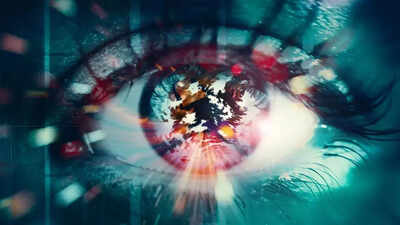Have you ever paused to truly consider your awareness of the present moment? A fascinating study from 2022, published in Science Advances, indicates that our perception of the present might be more of an illusion than we realize. Researchers suggest that our brains could be presenting us with a visual representation that is, in fact, up to 15 seconds old.
This intriguing phenomenon, highlighted by Popular Mechanics and UNILAD Tech, suggests that our brains cleverly combine recent visual inputs to construct a stable and seamless view of our surroundings. In essence, we may be constantly experiencing a version of the past, meticulously edited by our brains to feel like the immediate "now." Let’s delve into how this process works and why it occurs.

The human brain does not process the visual world in real-time. Instead, it employs a delay, merging images from the very recent past to generate a consistent and smooth depiction of our environment. Scientists have termed this effect a "previously unknown visual illusion," serving as a protective mechanism against the overwhelming chaos of moment-to-moment perception.
Rather than being a mere imperfection, this delay functions as a crucial survival mechanism, helping us navigate the constant influx of sensory information in a dynamic world. Consider the rapid changes occurring around us – flickering lights, shifting shadows, moving objects, or even the swift movements of our own eyes. Attempting to process each of these changes instantaneously would undoubtedly overload our cognitive capabilities.
To prevent sensory overload, our brains utilize a process known as serial dependence. This involves blending our current visual input with what we perceived just moments ago. This technique results in visual smoothing, providing us with the impression of a calm and stable scene. In essence, our brains sacrifice absolute precision for the sake of mental peace.
The study revealed that our brains might be relying on visual snapshots from up to 15 seconds in the past. This implies that what we perceive as the "present moment" is essentially an edited replay of earlier visual input.
This delay is crucial for enabling us to function effectively in a constantly evolving environment, preventing cognitive fatigue. It acts as a form of biological buffering, where our brains continuously edit a video, replaying the last few seconds to ensure continuity. Far from being a mere glitch, this feature offers significant evolutionary advantages. By prioritizing consistency over hyper-accurate real-time feedback, the brain allows us to:
In today's fast-paced world, this smoothing effect ensures that our attention isn't hijacked by every minor alteration in our surroundings.
This discovery challenges a fundamental concept in mindfulness and philosophy – the notion of being fully present. If our visual reality is indeed based on the past, then the "now" that we believe we are experiencing is not truly the present, but rather a curated experience shaped by our brain's memory and guesswork.
This raises thought-provoking questions:
You’re seeing the past — and your brain doesn’t want you to know.
Also Read | Earth's faster spin may cause shorter days, scientists warn — should you be concerned
Newer articles
Older articles
 Samsung Galaxy A35 5G and A55 5G: Full Pricing and Specs Revealed
Samsung Galaxy A35 5G and A55 5G: Full Pricing and Specs Revealed
 Warning Signs: 5 Clues Your Body May Be Signaling Prediabetes
Warning Signs: 5 Clues Your Body May Be Signaling Prediabetes
 Brain's Eye View: Study Shows We See the World 15 Seconds in the Past
OR
The 15-Second Delay: How Your Brain Creates a Seamless, But Delayed, Reality
Brain's Eye View: Study Shows We See the World 15 Seconds in the Past
OR
The 15-Second Delay: How Your Brain Creates a Seamless, But Delayed, Reality
 Expert Tips to Help Kids Sharpen Focus and Combat Distractions
Expert Tips to Help Kids Sharpen Focus and Combat Distractions
 SA20 Teams Allowed Up to Six Player Retentions, Enhanced by New RTM Card and Increased Salary Cap for Upcoming Auction
SA20 Teams Allowed Up to Six Player Retentions, Enhanced by New RTM Card and Increased Salary Cap for Upcoming Auction
 Cervical Cancer: Don't Ignore These 5 Subtle Warning Signs
Cervical Cancer: Don't Ignore These 5 Subtle Warning Signs
 Science-Backed: 5 Simple Daily Habits for a Healthier Heart
Science-Backed: 5 Simple Daily Habits for a Healthier Heart
 Shimron Hetmyer's Last-Gasp Six Stuns MI New York, Orcas Complete Record MLC Chase
Shimron Hetmyer's Last-Gasp Six Stuns MI New York, Orcas Complete Record MLC Chase
 Oral Cancer: Spotting the Signs, Understanding the Risks, and Why Early Detection is Critical
Oral Cancer: Spotting the Signs, Understanding the Risks, and Why Early Detection is Critical
 Infrequent Bowel Movements: When Is It Time to Worry? A Guide to Healthy Digestion
Infrequent Bowel Movements: When Is It Time to Worry? A Guide to Healthy Digestion